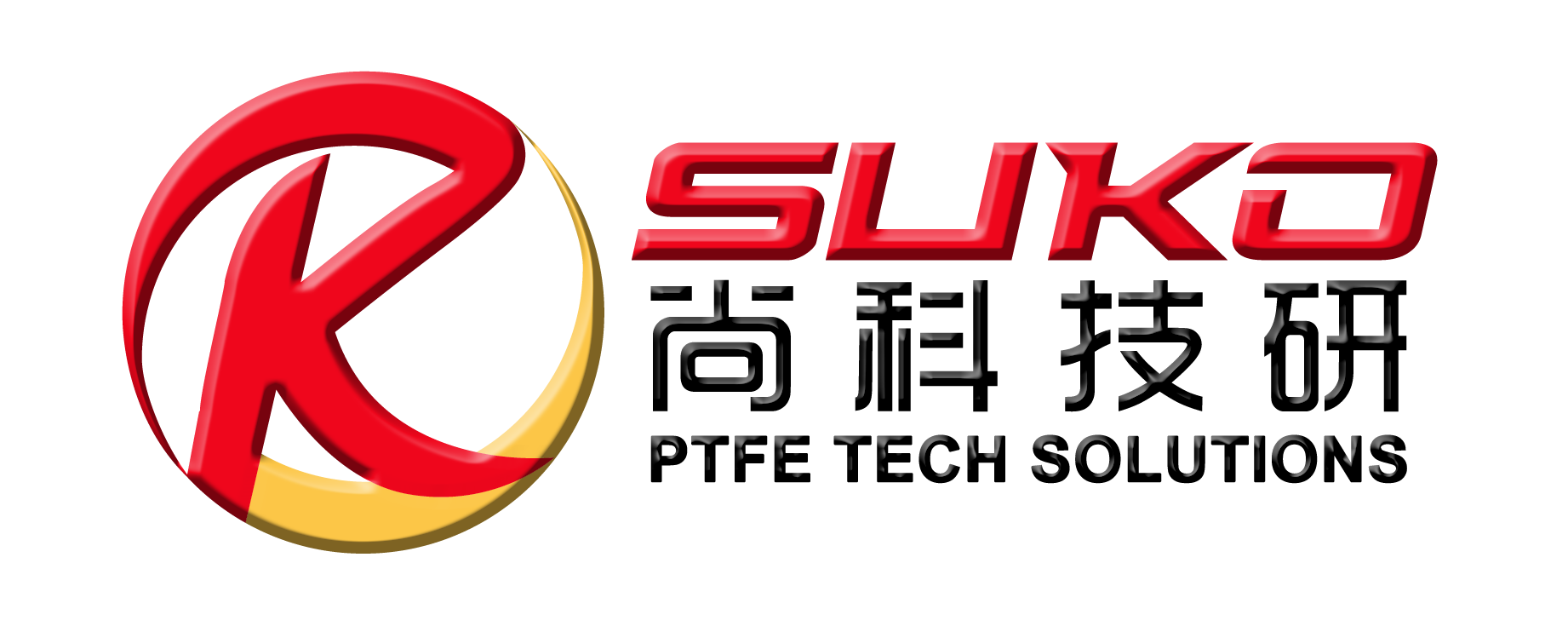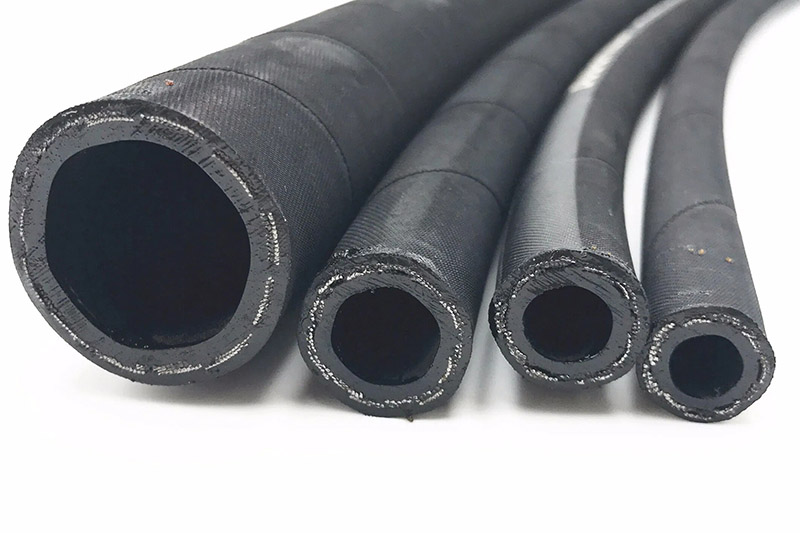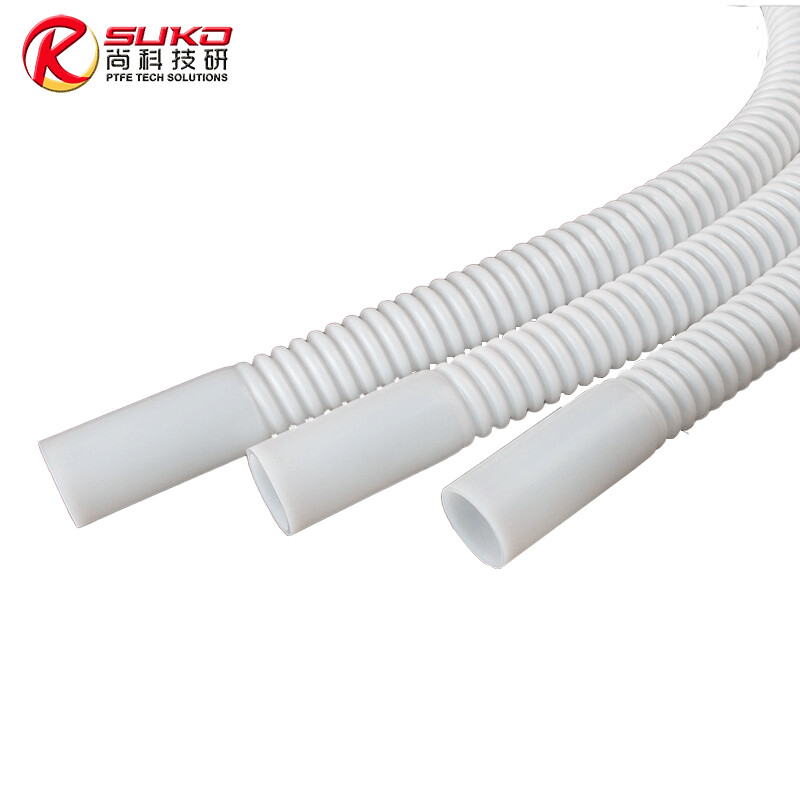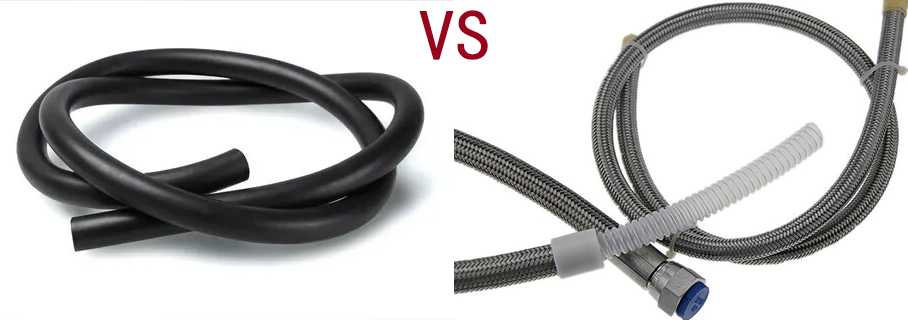Hey there! If you’re reading this, you probably know that choosing the right industrial hose isn’t as simple as picking one off a shelf. Get it right, and your operations run like a dream. Get it wrong? You could be looking at costly downtime, product contamination, or even serious safety hazards. It’s a bigger deal than most people think.
Two of the most common contenders in the ring are PTFE Corrugated Hose and the traditional Rubber Hose. On the surface, they both move stuff from point A to point B. But that’s where the similarities end.
Here at SUKO, we’ve spent years helping engineers, lab managers, and plant operators navigate this exact choice. We’ve seen the successes and the “oops” moments. So, we wanted to put together a real, no-fluff guide based on our hands-on experience. We’re going to break down the ptfe vs rubber hose debate, look at key performance factors, and help you figure out which one is the undisputed champion for your specific needs.
Let’s get into it.
First, What Are We Actually Talking About?
Before we pit them against each other, let’s do a quick intro.
Rubber Hose: The Classic Workhorse
Think of rubber hoses as the old reliable pickup truck. They’ve been around forever and are fantastic for a lot of general-purpose jobs. They’re typically made from materials like EPDM, Nitrile (Buna-N), or Neoprene. They’re flexible, relatively inexpensive, and great for things like water transfer, air lines, and handling some mild chemicals or oils. They get the job done in non-demanding environments.
PTFE Corrugated Hose: The High-Tech Specialist
Now, think of a PTFE hose as a modern, high-performance vehicle engineered for extreme conditions. PTFE stands for Polytetrafluoroethylene—you probably know it by its most famous brand name, Teflon™. When we talk about our PTFE Corrugated Tubing, we’re talking about a hose that’s built for the toughest jobs imaginable. The “corrugated” design adds incredible flexibility, making it a game-changer for complex setups. It’s the go-to for industries where purity, extreme temperatures, and aggressive chemicals are part of the daily routine.
The Main Event: PTFE vs. Rubber Hose Showdown
Alright, let’s put these two materials head-to-head across the factors that really matter in an industrial setting.
1. Chemical Resistance: The Great Wall of PTFE
This is arguably the most critical factor for many industries and where PTFE truly shines.
Rubber Hose:
A rubber hose’s chemical resistance is a mixed bag. A Nitrile hose might be great for oils and fuels but will swell and degrade when exposed to ketones or chlorinated solvents. An EPDM hose handles acids and alkalis well but fails with petroleum-based fluids. You have to play a matching game, carefully checking compatibility charts for every single chemical you plan to transfer. One mistake can lead to hose failure, leaks, and a hazardous mess.
PTFE Corrugated Hose:
PTFE is, for all practical purposes, chemically inert to almost everything. We’re talking about the most aggressive acids, solvents, bases, and caustic fluids you can think of. The only things that can really touch it are molten alkali metals and some obscure fluorinating agents.
This near-universal chemical resistance is a massive advantage. You don’t need a different hose for every chemical in your plant. This simplifies inventory, reduces the risk of human error, and provides peace of mind. Our chemical resistance comparison isn’t even a close fight; PTFE is in a league of its own.
Real-World Experience from SUKO:
We once worked with a specialty chemical manufacturer who was replacing their rubber hoses every three months. They were transferring a cocktail of aggressive solvents that were slowly eating away at the hose lining. The constant replacement cycle was not only expensive but also introduced significant downtime and safety risks during changeovers.
They switched to our SUKO PTFE Corrugated Hose. A year later, those same hoses are still in service, looking as good as new. The initial investment paid for itself in under six months just from eliminating replacement costs and downtime.
2. Temperature Range: Bringing the Heat (and the Cold)
If your process involves extreme temperatures, this is a non-negotiable decision point.
Rubber Hose:
Most standard rubber hoses have a fairly limited operating temperature range. A typical EPDM hose might be rated from -40°C to 120°C (-40°F to 250°F). Go too hot, and the rubber gets soft, gummy, and can burst. Go too cold, and it becomes brittle and can crack. This makes them unsuitable for applications like steam lines, high-temperature fluid transfer, or cryogenic applications.
PTFE Corrugated Hose:
This is where we find the best hose for high temp applications. PTFE is a thermal superstar. Our corrugated tubing, for example, boasts a massive operating temperature range of -65°C to 260°C (-85°F to 500°F).
This means you can use the same hose to transfer super-heated oils, run high-temperature sterilization cycles (like SIP – Steam-in-Place), or handle fluids in frigid environments without any change in performance or integrity. It doesn’t get brittle in the cold or degrade in the heat.
3. Flexibility and Installation: The “Corrugated” Advantage
A hose is useless if you can’t route it where it needs to go.
Rubber Hose:
Rubber hoses are generally flexible, which is one of their main selling points. However, they have a minimum bend radius. If you try to bend them too tightly to navigate a corner, they can kink, restricting flow and damaging the hose structure. This can be a real headache in the tight, cramped spaces of modern machinery.
PTFE Corrugated Hose:
This is where the “corrugated” part of the name becomes so important. A standard, smooth-bore PTFE hose can be quite rigid. But by engineering it with helical convolutions (the corrugated design), we create a hose that is incredibly flexible.
Our PTFE Corrugated Tubing is designed for maximum flexibility, allowing for a much tighter bend radius without kinking. This makes installation in complex, tight-fitting systems a breeze. It’s the perfect solution for connecting moving parts, navigating around obstacles, or any application where you need agility without sacrificing performance.
4. Purity, Cleanliness, and Non-Stick Surface
For industries like pharmaceuticals, food and beverage, and semiconductors, what doesn’t come out of the hose is just as important as what does.
Rubber Hose:
Rubber hoses can be problematic here. They can contain plasticizers and other additives that can leach out into the fluid being transferred, causing contamination. Over time, the inner surface can also degrade and shed particles. Furthermore, their surfaces are slightly porous, which can trap bacteria and make thorough cleaning difficult.
PTFE Corrugated Hose:
PTFE is the gold standard for purity.
- Non-Leaching: It’s made without any plasticizers or additives, so there’s nothing to leach into your product. This is why it’s often specified for high-purity applications and meets standards like FDA 21 CFR 177.1550 and USP Class VI.
- Non-Stick: The surface of PTFE is famously non-stick (the same reason it’s used on cookware!). This means materials, especially sticky or viscous ones, flow through easily without leaving residue behind.
- Easy to Clean: The non-stick, non-porous surface makes it incredibly easy to clean and sterilize, preventing cross-contamination and bacterial growth. This is crucial for CIP (Clean-in-Place) and SIP (Steam-in-Place) processes.
Quick Comparison Table: PTFE vs. Rubber at a Glance
To make things even clearer, here’s a simple table summarizing the key differences.
| Feature | PTFE Corrugated Hose (e.g., SUKO’s) | Standard Rubber Hose |
|---|---|---|
| Chemical Resistance | ✔️ Virtually universal (Inert to most chemicals) | ⚠️ Specific (Must match hose material to chemical) |
| Temperature Range | ✔️ Extremely Wide (-65°C to 260°C) | ⚠️ Limited (Typically -40°C to 120°C) |
| Flexibility | ✔️ Excellent (Corrugated design allows tight bends) | ✔️ Good (But can kink if bent too tightly) |
| Purity & Non-Stick | ✔️ Superior (Non-leaching, non-stick, easy to clean) | ❌ Potential for leaching and particle shedding |
| Durability & Lifespan | ✔️ Very Long (Resists aging, UV, and fatigue) | ⚠️ Moderate (Degrades with age, UV, and chemical exposure) |
| Upfront Cost | Higher | Lower |
| Total Cost of Ownership | Lower (Due to longevity and reduced downtime) | Higher (Due to frequent replacements and downtime) |
5. Durability, Lifespan, and Total Cost of Ownership
This is where we need to talk about a crucial concept: upfront cost vs. long-term value.
Rubber Hose:
There’s no denying it: a rubber hose is cheaper to buy upfront. If you have a very limited budget and a non-critical application, it can be a tempting choice. However, rubber is susceptible to aging. It degrades over time from exposure to ozone, UV light, and general wear and tear, even when used within its specified limits. This leads to a shorter lifespan and the need for frequent inspection and replacement.
PTFE Corrugated Hose:
PTFE is a “buy it right, buy it once” kind of material. It is completely resistant to weathering, ozone, and UV light. It doesn’t age or become brittle over time. This means a PTFE hose assembly will dramatically outlast a rubber one in the same service, especially in a demanding environment.
When you factor in the cost of replacement hoses, the labor to install them, and—most importantly—the cost of operational downtime during changeovers, the higher initial price of a PTFE hose often results in a much lower Total Cost of Ownership (TCO). It’s an investment in reliability. For many, finding a high-quality teflon hose alternative to their constantly failing rubber hoses is a massive operational and financial win.
So, When is PTFE the Undisputed Champion?
Based on our experience at SUKO, here are the applications where choosing a PTFE corrugated hose is a no-brainer:
- Pharmaceutical & Biotech: Where product purity is non-negotiable and sterilization processes (autoclave, SIP) are common.
- Chemical Manufacturing & Transfer: When handling aggressive, corrosive, or high-purity chemicals.
- Food & Beverage Processing: For transferring syrups, oils, or dairy products, where cleanability and FDA compliance are essential.
- High-Temperature Fluid Lines: For applications involving hot oil, steam, or other fluids at elevated temperatures.
- Complex Machinery & Robotics: Where extreme flexibility is needed to route hoses through tight spaces without kinking.
- Cryogenic Applications: For transferring super-cooled liquids where other materials would become brittle.
The Final Verdict: It’s About the Right Tool for the Right Job
Let’s be fair. Does a rubber hose still have its place? Absolutely. For a simple water line in a non-critical area or a low-pressure air hose in a workshop, a rubber hose is a perfectly sensible and cost-effective choice.
However, the moment your application involves any of the following—aggressive chemicals, high or low temperatures, purity requirements, or complex routing—the ptfe vs rubber hose debate swings decisively in favor of PTFE.
Choosing a PTFE corrugated hose isn’t just an upgrade; it’s a strategic decision to enhance safety, improve reliability, and lower your long-term operational costs. It’s about moving beyond “good enough” and investing in a solution that you can trust day in and day out.
Ready to Make the Switch or Have More Questions?
We hope this head-to-head comparison has cleared things up! Choosing the right hose is a critical decision, and we’re here to help you make it with confidence.
➡️ Explore the Specs: Dive deeper into our PTFE Corrugated Tubing | Flexible Chemical & High-Temp Resistant Hose to see the technical data for yourself.
Post time: Jul-04-2025




